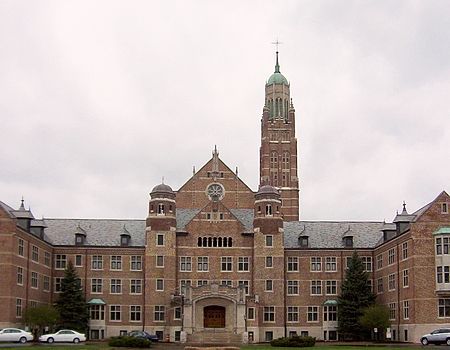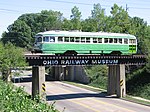Pontifical College Josephinum
1888 establishments in OhioCatholic seminaries in the United StatesCatholic universities and colleges in OhioEducational institutions established in 1888Pontifical College Josephinum ... and 6 more
Pontifical universitiesRoman Catholic Diocese of ColumbusSaint Joseph (husband of Mary)Seminaries and theological colleges in OhioUniversities and colleges in Columbus, OhioWorthington, Ohio

The Pontifical College Josephinum is a private Roman Catholic liberal arts college and graduate school of theology in Columbus, Ohio. It was founded by Monsignor Joseph Jessing in 1888 and is the only pontifical seminary in North America. The seminary prepares its students to become priests in the Roman Catholic Church. Students come from U.S. dioceses that do not have their own seminaries, as well as dioceses from around the world. The Josephinum, which means "House of Joseph", was granted pontifical status in 1892 by Pope Leo XIII, recognizing its unique mission of forming priests for the international Catholic Church.
Excerpt from the Wikipedia article Pontifical College Josephinum (License: CC BY-SA 3.0, Authors, Images).Pontifical College Josephinum
North High Street, Columbus
Geographical coordinates (GPS) Address Website External links Nearby Places Show on map
Geographical coordinates (GPS)
| Latitude | Longitude |
|---|---|
| N 40.120037 ° | E -83.018183 ° |
Address
Pontifical College Josephinum
North High Street 7625
43235 Columbus
Ohio, United States
Open on Google Maps







